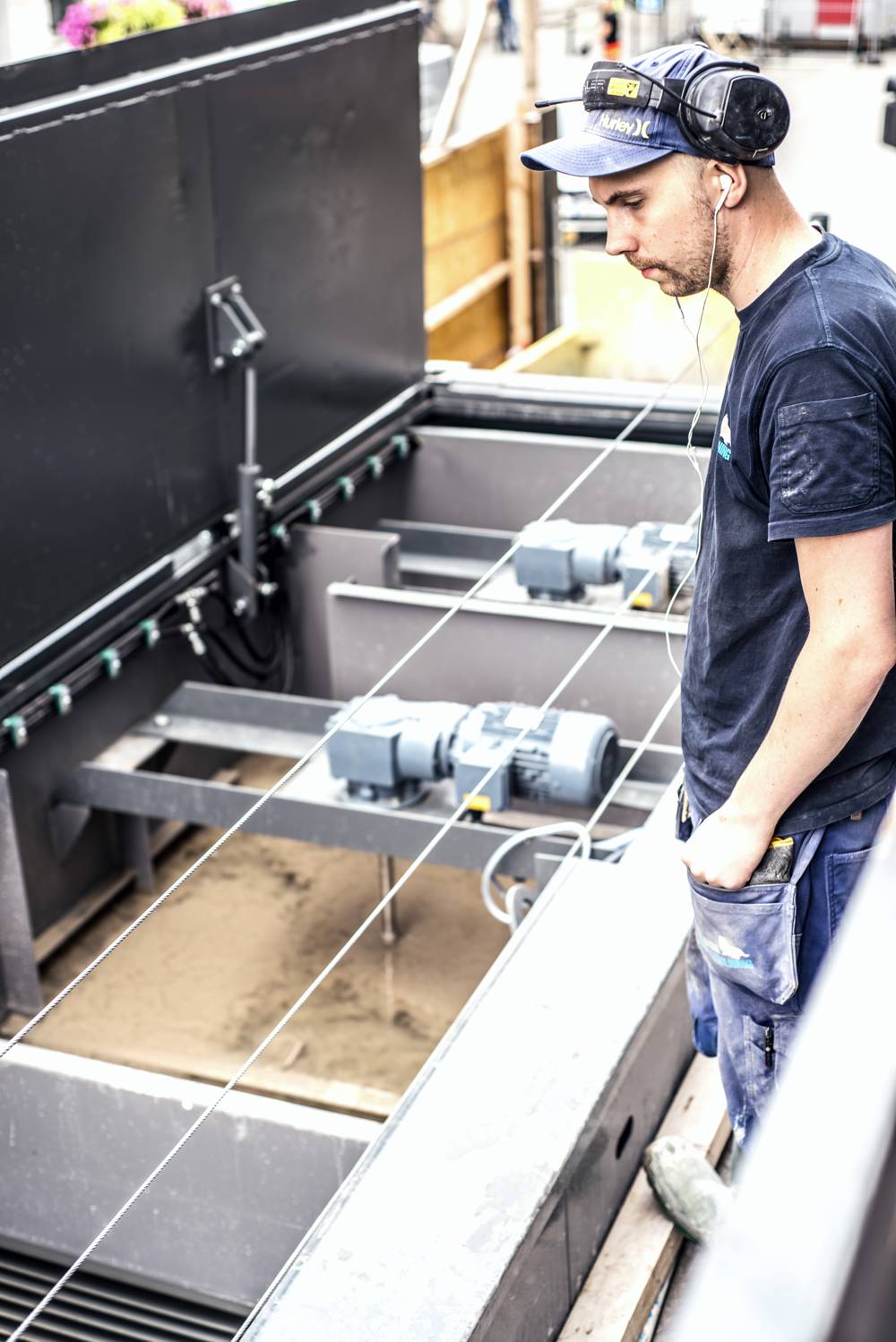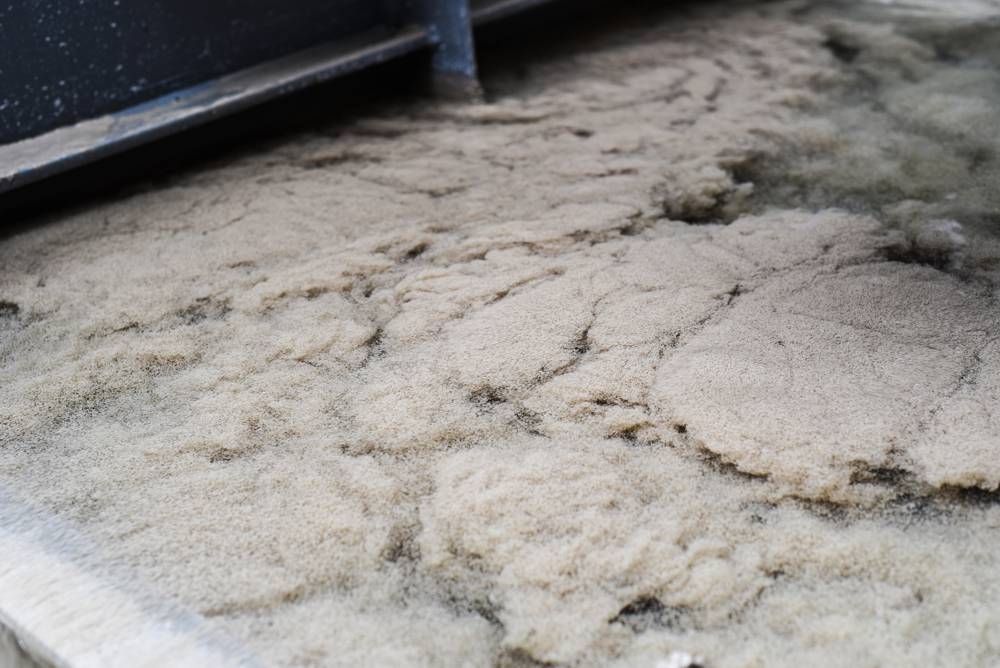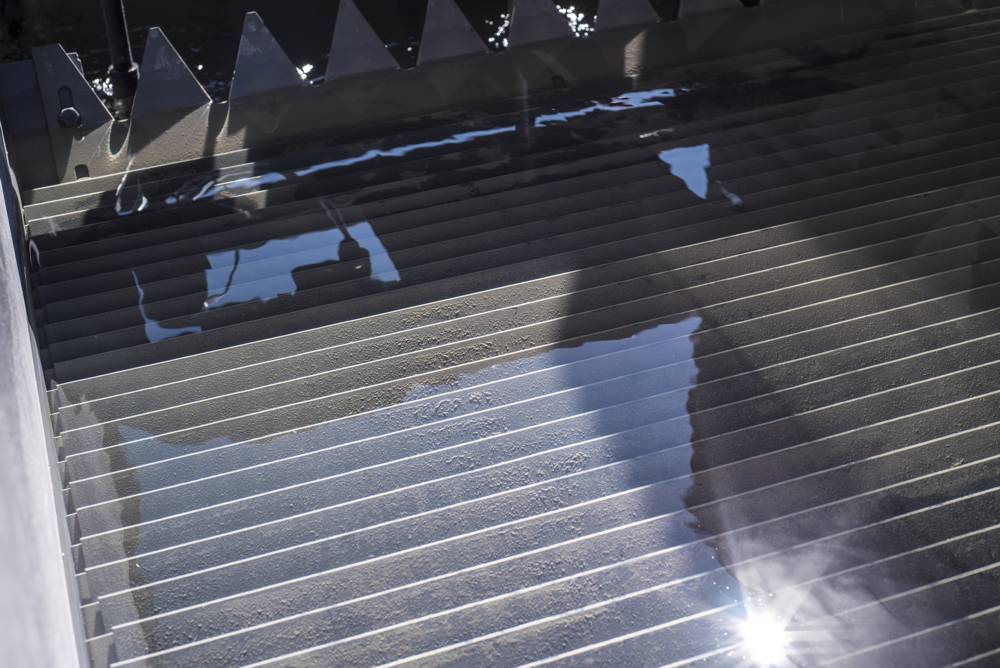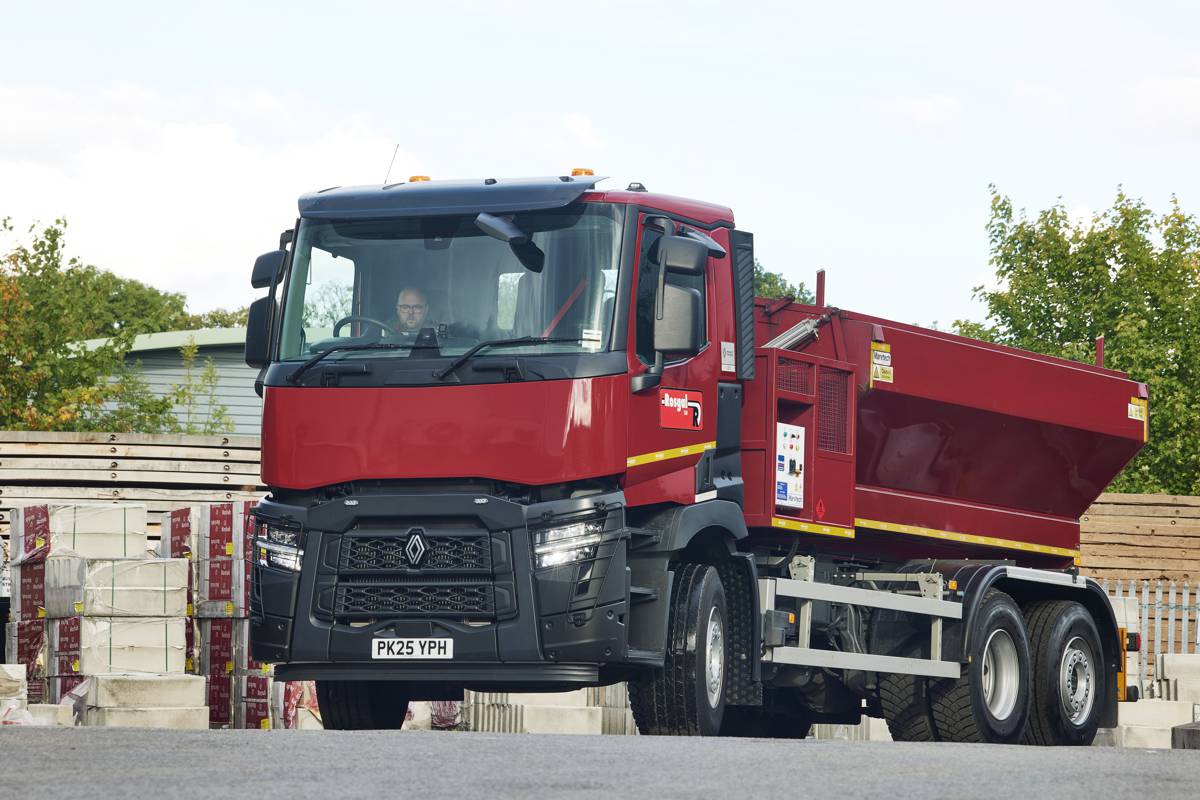When high stakes and pH levels increase efficiency to meet environmental standards
There has never been a time when the stakes were higher for construction contractors. For starters, demand is expected to grow 85% by the year 2030.
The Associated Builders & Contractors reports that construction backlog hit a historical high of 9.9 months in mid-2018, with bridges particularly desperate for renovation. An estimated backlog of $123 billion in bridge rehabilitation haunts contractors’ collective to-do lists, with nearly one-third of U.S. bridges rated structurally deficient.
Robotic Hydrodemolition is one method growing in popularity. It is rising to the challenge of addressing the need for fast, safe and efficient concrete removal during infrastructure projects. But with Hydrodemolition comes the obvious question, “What do you do with the wastewater?” The answer: collect and clean it. More and more contractors are finding that a water collection system paired with original equipment manufacturer (OEM) treatment equipment will keep government and environmental agencies happy and keep work coming.
Efficiency Through Hydrodemolition
Hydrodemolition robots use high-pressure water jets as powerful as 40,000 psi to remove damaged or deteriorated concrete on bridges, office buildings, airport runways, or virtually any concrete structure in need of repair. It is more efficient than traditional handheld methods, matching the speed and surpassing the precision of 15-20 workers operating pneumatic breakers. Contractors looking for ways to keep up with increasing demand can maximize their productivity by adding one or more Hydrodemolition robots to their crew.
This efficiency, however, does not come without responsibility. While it eliminates the dust and noise pollution associated with pneumatic breakers, the wastewater created during the Hydrodemolition process has an increased pH level and high turbidity — cloudiness or haziness caused by the presence of a large number of debris particles. The wastewater must be captured and treated before being released into the environment or reused by a robot.
Hydrodemolition contractors needs to set up a wastewater capture system before beginning a project. The method of capture depends on the project, but typically involves damming up and guiding the water to a holding area where it can be collected and treated. Crews completing a recent parking garage renovation constructed barricades to contain water and debris as the robot removed concrete. The water was routed across each level of the garage and through a series of filters, allowing gravity to assist with particle removal by the time the water reached ground level.
Another contractor working on a recent Department of Transportation bridge renovation project dammed up the storm collection box on the downhill end of the bridge, as well as any other areas water could escape. Vacuum trucks then sucked the water from the collection area, as well as any standing water in the work area. The entire process, from collection to treatment, was carefully monitored by state officials.
After collection, contractors have the choice between hiring a third party to treat the used water for pH and turbidity or investing in a water treatment system to do it themselves.

Third-Party Treatment
For newcomers to Hydrodemolition, capturing and treating the wastewater themselves can seem daunting, and many resort to hiring a third party to manage the process. These water retrieval contractors haul the water away on vacuum trucks to be treated at a specialized facility.
While this removes some of the logistical burden from the contractor, it is too costly to be a permanent solution. These wastewater removal services can cost as much as $2000 per truckload, and there may be a need for upwards of 5 hauls per day, depending on the project. That means that over the course of a bridge deck repair, for example, contractors could pay as much as $50,000 for water removal services for a one-week Hydrodemolition project.
Given the high cost of paying a third party for wastewater management, experienced contractors generally favor owning a water treatment system over hiring out the services.

Getting Specific
Water treatment systems are manufactured with a variety of features and differ in their treatment methods. Each uniquely affects the safety, efficiency and, ultimately, the profitability of a contractor’s operation.
As contractors survey their choices for water treatment systems, they’ll find that some independent manufacturers provide aftermarket systems that require less of an investment than OEM systems. These systems typically use mineral or citric acid to treat the water which comes with safety risks and high operating expenses. These systems also fail to provide treatment documentation, an increasingly vital component in an environmentally sensitive industry.
Certain Hydrodemolition equipment manufacturers offer advanced water treatment systems specifically designed to work with their robots. The most sophisticated systems use methods that can offer safer operation, more reliable turbidity reduction and more cost-efficient treatment than aftermarket units.

Safety and Savings with CO2
There are a handful of different substances that can be used to reduce water pH. While the most effective is carbon dioxide, most aftermarket water treatment systems use mineral acid.
There are a number of dangers and inefficiencies that come with using acid for pH reduction. One of the biggest downsides is mineral acid is dangerous to handle. Workers must have special training and wear special personal protective equipment (PPE) to work with the acid. Precision and control are also greatly reduced when using acid to reduce pH. It is easy for operators to accidentally take the treatment too far and acidify the water. This fact alone results in a necessarily slow and costly process.
Some advanced water treatment systems use carbon dioxide rather than acid to neutralize water pH. With carbon dioxide it is virtually impossible to acidify the water. Plus, unlike methods requiring acid, carbon dioxide does not leave any hazardous byproducts.
Treatment with carbon dioxide is also a fraction of the cost of acids commonly used for pH reduction. Treating with hydrochloric or sulfuric acid costs around four times as much as carbon dioxide. Citric acid? Nearly eight times more expensive.
In short, a system that treats pH with carbon dioxide instead of acid is much easier and far less expensive to operate.

Treatment Documentation
Advanced water treatment systems will often offer features that can give contractors the edge they need to win a competitive bid. Some sophisticated systems provide detailed daily reports that offer insight to the cleanliness of the discharged water, including pH levels and the amount of water that was treated.
Depending on the unit, these reports may be printed and shared with stakeholders to verify treatment. This documentation provides proof of compliance to environmental regulations and builds trust with the project owner.
Some systems take the technology a step further with online monitoring and control systems. Operators can view data in real time, and even control the entire system from the online command center. This provides contractors even more control, flexibility and precision while solidifying their peace of mind that the water they release is harmless to the environment.

Greater Performance
In addition to safety and reporting capabilities, advanced water treatment systems can provide more robust performance than aftermarket systems. Aftermarket treatment systems are typically limited in their ability to treat for pH and reduce water turbidity. Many of these units use filters or mechanical means, such as a cyclone, to reduce turbidity. These methods are slow, inefficient and expensive.
Some advanced treatment systems use modern flocculation technology to effectively remove particles from the water, reliably reducing water turbidity to harmless levels. These sophisticated units can treat water much faster than aftermarket systems, greatly improving jobsite productivity. Efficient systems can process over 5,000 gallons of water per hour, ensuring used water is treated quickly.
Along with providing better treatment capabilities and higher capacities, advanced water treatment systems allow for easier setup, teardown and transport. Aftermarket systems often require extra components that complicate jobsite logistics. Some advanced systems, conversely, are completely self-contained, simplifying the entire process and allowing contractors to complete jobs quickly.

Technology for the Times
Today’s contractors face a unique set of challenges. Increased workloads, a shortage of skilled labor and growing concern about the environment continue to raise the stakes.
Though the times are challenging, advanced technology can give contractors the tools they need to succeed. Contractors who use robotic Hydrodemolition can do more with less and still meet the strictest environmental standards with advanced water treatment systems. Taking advantage of the latest water treatment technologies can give contractors peace of mind knowing their crews are operating within specifications and give them the edge they need to win their next bid.
Article by Keith Armishaw, business development manager, Aquajet. Keith is the business development manager for Aquajet’s North American subsidiary. He has more than 24 years of industry and leadership experience.



















